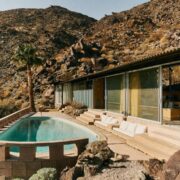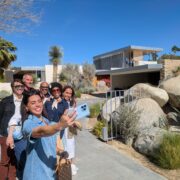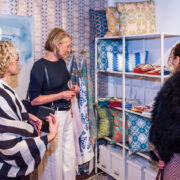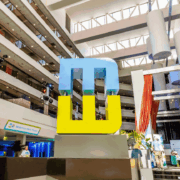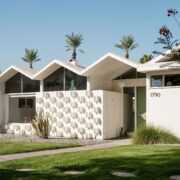Thomboy Properties Puts the Late-Moderne Back into this Classic Herbert Burns Estate
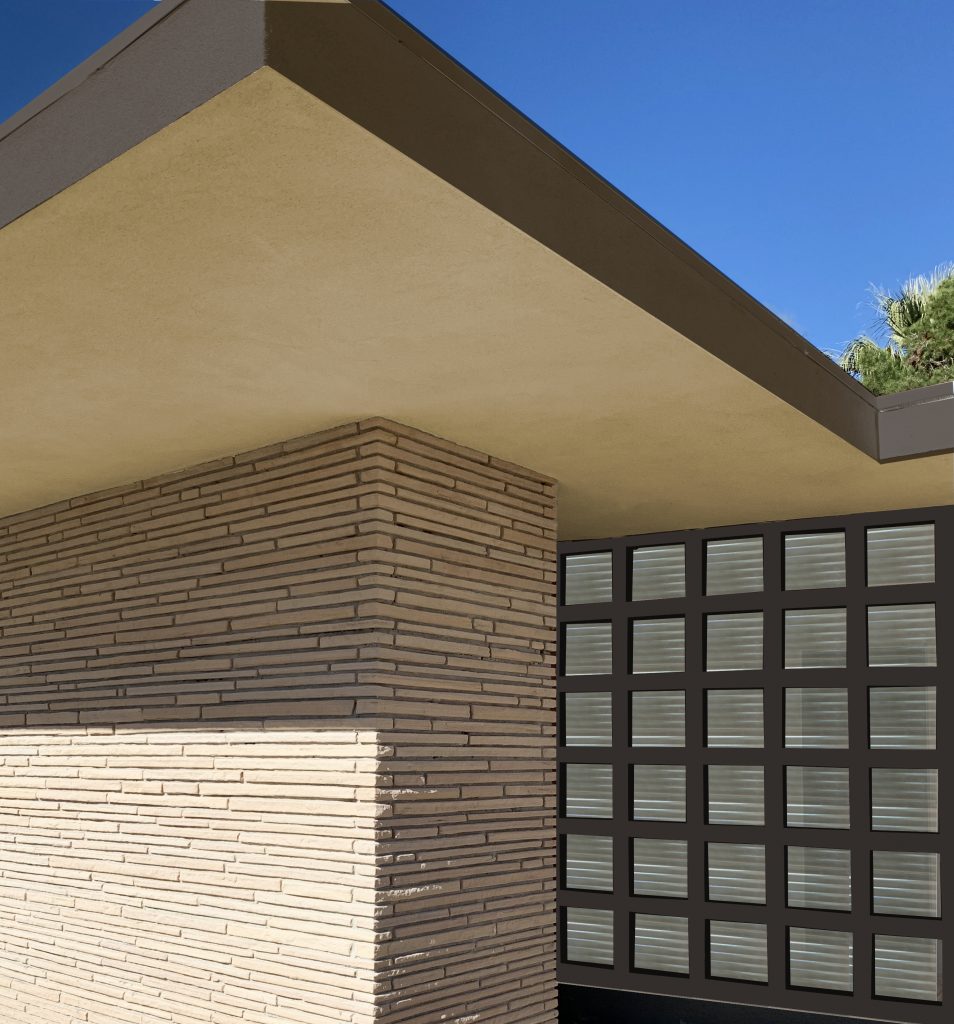
Palm Springs dynamic duo Jackie Thomas and Dee Ann McCoy of Thomboy Properties are no strangers to dramatic renovations. From the Hidden Frey to their own Moroccan-inspired Midcentury Manse, they have rescued countless homes in distress and brought them back to life with their signature style. But the Gillman Residence, the 2020 Modernism Week Showcase Home, is the most significant restoration project that they have undertaken to date.
The King of Arenas Road
Dubbed the King of Arenas Road (where some of his most famous projects are located) and the “charismatic chameleon” by his biographer, historian Steven Keylon, Herbert Burns was a prolific Desert Modernist who had multiple careers before becoming an architectural designer (he never became a licensed architect).
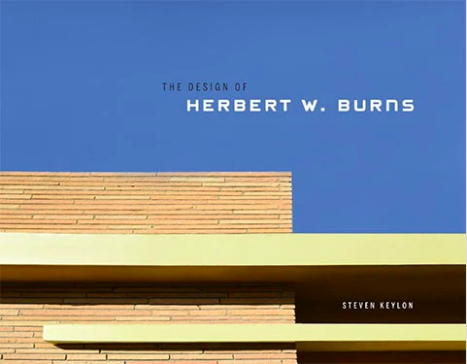
Herbert Burns’ story – from transcending his working class Philadelphia roots, and driving his family across the country to California, surviving World Wars and depressions to working as a stockbroker, electrical engineer, building contractor, and hotelier – embodies the American Dream. His body of work in Palm Springs – which spans residential and hospitality (he’s most well known for designing the Holiday House, The Orbit In, and the Hideaway, originally the Town & Desert) – embodies American post-war optimism.
The Gillman Residence was built in 1948 for Dr. and Mrs. Gillman and is considered to be one of Burns’ more lavish homes. Inspired by the work of Frank Lloyd Wright and Le Corbusier in the style of Late Moderne (which was a precursor to what would later be called “modernism”), this home was designed to take advantage of the natural beauty of the desert.
Sadly this handsome house was not living its best life when Thomboy Properties discovered it last year. Jackie and Dee Ann sat down with Modernism Weekly to give us the behind-the-scenes story on what it’s taken to bring the Gillman Residence back from the brink.

How did you come across this house?
We received a very early morning email from a realtor who thought we might be interested in a unique opportunity that she felt could be magnificent but was at the time quite daunting. It was a Friday and we were heading out of town for the weekend so we suggested we would take a look upon our return. She insisted that if we were really interested we would need to act before we left for the weekend. So, we met her at the property on our way out of town. We walked the house, which at the time was completely open to the elements, and about 1/2 hour into the walk thru we made an offer.
Did you discover anything interesting or unexpected in the demolition process? (hidden surprises?)
Having sat open to the elements for at least 24 months, the house was primarily demoed when we found it. The biggest surprise was what had been demolished. What we discovered was that many of the original architectural elements had been removed or destroyed by previous contractors. We embarked on a fact finding mission and with the assistance of Steven Keylon, Burns’ architectural historian, and we were able to identify many of the missing elements. The stunning Arizona Sandstone wall, for which Burns is known, had been removed from the interior entry wall; the signature soffit was removed from over the fireplace; an entire exterior pier, soffit and planter boxes had been completely removed; a cantilevered roofline at the front of the house had been amputated; and the dramatic reeded glass grid at the entrance of the home had been removed.
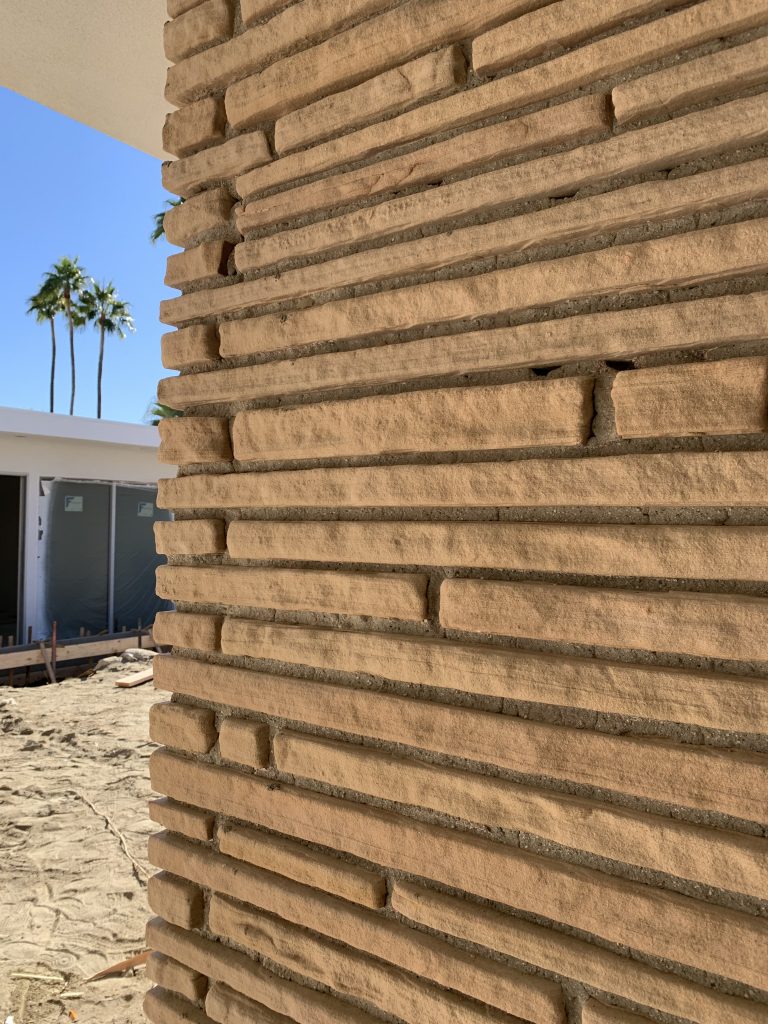
There is a big difference between renovation and restoration.
What were some of the most challenging aspects of this restoration/renovation project?
Well, one of the lessons we’ve learned on this project is that there is a big difference between renovation and restoration. One of the biggest challenges in this restoration was identifying all the architectural elements were now missing and then sourcing or fabricating as many of the original materials as possible: Arizona sandstone, Weldtex (a striated texture of combed plywood), glass, redwood slats, etc.
What are the most notable features about this home’s original architecture?
Without a doubt the Arizona sandstone is a Burns signature feature. It is prominent on the exterior of the home and also continues inside the house to seamlessly blend the inside and outside. Other notable features include sandstone piers, double cantilevered rooflines and uplift soffits.
What were the most challenging parts of this project?
I would say the delicate dance of restoring the house to its original grandeur while balancing the expectations of today’s buyers.
Are you changing, augmenting, or transforming certain aspects of the home?
We would say the house has been transported back to 1948 in appearance with 21st Century amenities and luxuries.
PRO TIP: Modernism Week’s Showcase Home is open both weekends. Tickets for tours are still available here, times vary.

